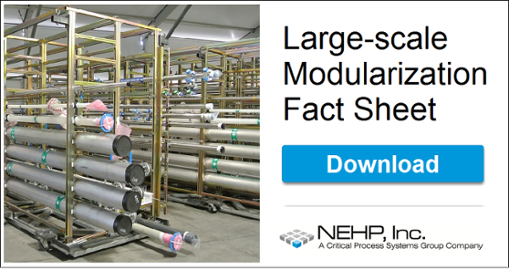/Waiting%20-%208%20wastes%20of%20lean.png?width=241&name=Waiting%20-%208%20wastes%20of%20lean.png) Tips for Identifying and Managing Waiting Lean Waste
Tips for Identifying and Managing Waiting Lean Waste
We spend an unfortunate amount of time in our lives waiting. Some calculate this to be as much as 20% to 40% of our daily activities. Waiting at work, or at home, often amounts to nothing more than unproductive time, wasted time.
In the 8 wastes of lean, waiting waste can be attributed to inactivity or working slowly in a process, delays stemming from failure to complete a previous process or wasted time waiting for the next step in a process to begin.
So how do we effectively address waiting waste in Lean construction?
1) Change Perspective
For starters, it helps to re-evaluate our views and approach to waiting as it relates to work flow and productivity. According to the 8 wastes of lean, waiting is the act of doing nothing or working slowly in a process whilst waiting for a previous step to complete within project guidelines. This definition infers that waiting is something we naturally tend to accept and/or make limited conscious effort to affect.
While there are many different variables in any given activity or process, it is essential for us to begin recognizing that there are aspects of waiting that can indeed be changed. Waiting is as much about process management as it is about time management. From this perspective we can begin to identify what processes need to be addressed and take proper measures to change them.
/Process%20and%20time%20management.png?width=600&name=Process%20and%20time%20management.png)
To assist, waiting can be broken down into two essential types:
- Primary waiting - is waiting for "direct operation activities" which you are able to influence, plan for, or change. Direct operation activities include company policies, procedures, objects, processes, and people that are accessible and directly involved in the end goal, company profits, or customer satisfaction.
- Secondary waiting - refers to "indirect operation activities" that are generally more difficult to influence or change. Indirect operation activities may include vendor issues, equipment breakdowns, personnel or HR complications, distant logistical delays, or third-party company delays. While these activities may not necessarily be in the direct path of the end goal, they too will impact performance, profits and customer satisfaction. Secondary waiting often requires more creative means of management.
2) Develop Waiting Awareness
By developing an awareness of the different types of waiting, we can better understand why we are waiting as well as how to maximize our time while waiting, how to minimize its impact on our bottom line, and how to restore balance and reliability to disrupted work flows.
/Downtime%20downward%20spiral%202.png?width=259&name=Downtime%20downward%20spiral%202.png)
While secondary waiting may be more difficult to identify and influence, just knowing that it exists apart from primary waiting can help you take proper measures to minimize its potential impacts.
One way to sharpen your awareness is to simply monitor who is waiting for who in order to complete their task(s).
Do we see team members, co-workers, associates, or even ourselves passively waiting for a previous operation or task to be finished, a delivery of products to arrive, equipment to be fixed, or for resolution of poorly communicated or incomplete instructions? Do these waiting constraints and/or habits occur more frequently in certain areas of operation compared to others?
Common waiting contributors include non-productive labor, equipment inefficiencies, production bottlenecks, lack of quality communication, insufficient materials, and information gaps; all of which contribute to both primary and secondary waiting.
3) Seek Continuous Improvement
The identification and elimination of primary and secondary waiting should not be limited to just our work environment either. We can also take measures to quantify wastefulness in our personal lives as well. Whether it's experiencing extended wait times on the phone, long lines at the check-out, fighting through traffic, waiting at airports, or delays on a project at home, there's always an opportunity to develop awareness and productive behavior around how we respond to waiting.
By practicing Lean time-management on your own and consciously seeking proactive and productive solutions for personal idle time, you can truly advance your Lean journey and improve the skills you need to ensure a positive impact on your company, customers and work/life productivity.
conclusion
Waiting contributes absolutely no added value to any process. It stems from production imbalance and activities that are not properly synergized. By changing how we view and respond to such activities we can take dramatic steps toward waiting-reduction and minimizing the waste it creates in our lives.
The end goal of Lean waste reduction is to improve profits by reducing costs. Since cost can be viewed both from a financial and temporal perspective, it's safe to say that waiting is among the most sinister forms of cost (and 8 wastes of Lean) as it intrudes both time and financial waste upon business value.
To conclude, one of the greatest steps one can take toward improving profits and reducing costs, is to remove all elements of waiting-waste from all business departments, processes and especially oneself; in a truly a holistic approach.
Continue to Part 4 of our 8 Wastes of Lean Construction Series, where we examine "non-utilized talent" as a primary Lean waste contributor.
If you would like more information about how we can help you with construction productivity improvement, please feel free to access our construction integration and large-scale modularization fact sheet below:
